More than one year from the start of The Salt Yard, tell us about this experience and your curatorial approach?
Dustin Shum (DS): The Salt Yard is run under the condition of scarce resources. It’s basically administered and funded by three co-founders, Lit Ma, Gary Ng and me. We don’t have a wealth of choices, budget and time, it’s always a challenge for us to make a decent presentation. And we can only organize a limited number of exhibitions. Our location is not particularly convenient but still we have visitors coming not only within Hong Kong but around the world. We feel very fortunate the photographers and artists are very supportive to us and understand the limitation we have.
The first exhibition ‘Mother Russia’ and the recent exposure of David Chancellor ‘The Game is Killing the Game’ were born in collaboration with a guest curator. These projects show an international opening and a smart curatorial capacity for dialogue which is not always detectable in the contemporary galleries. The Salt Yard in this sense appears as an independent space more able to experiment in a critical way. Tell us of these experiences…?
DS: In a certain extent we try to run the gallery with a global vision. On the one hand, we find a lot of good works by many mid-career photographers are not particularly active in art market. On the other hand, there are photographers like Shen Chiao-liang, Taca Sui or collector Thomas Sauvin who are already active in global photography scene but still quite obscure to local audience. Introducing their works to Hong Kong audience is one of our major goals as The Salt Yard is a space for the audience more than a space for the creators.
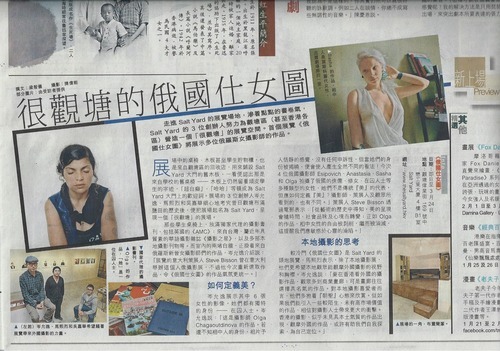
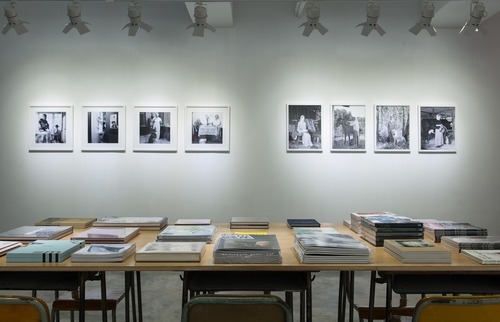
© The Salt Yard, installation view ‘Mother Russia’, 2013
We also emphasize effort in the curation of the exhibition, I guess that make us different from typical artist-run space. Cooperating with guest curators also offers alternative perspective that is different from the way we usually understand the world.
In the past exhibitions we also recognize the attempt to offer a broad vision on photography in the Asian continent: the Taiwanese Shen Chao-liang, the Japanese Patrick Nagatani or Kazutomo Tashiro. All these works have the advantage of a journey through different cultures. How do you perceive the photographic panorama in different Asian countries. What differences and meeting points you have acknowledged?
DS: The spectrum of cultures within Asian countries is very broad, sometimes I think it is oversimplified in many occasions. The variety of works among Asian photographers is huge. We are attracted by their works not simply because of cultural shocks but the subject matters of their works. I always believe photographers’ styles are greatly influenced by the environment and the cultural atmosphere that they were brought up. So even on the same subject matter we can see colourful variety of treatments by the photographers from different Asian countries.
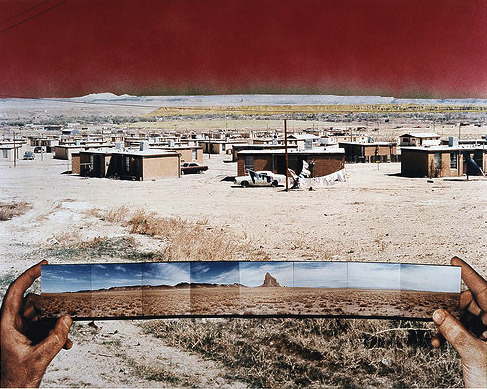
© Patrick Nagatani from the series ‘Nuclear Enchantment’
There are areas I think I still have not known well enough, photographers in South Asian countries for instance. And I have strong interest in works by Korean photographers, I hope I can spend more time and effort to study works from these countries in the near future.

© The Salt Yard, installation view ‘Nuclear Enchantment’ by Patrick Nagatani, 2013
Unlike many foreigners photographers who come to China to carry out often very similar projects, somehow returning a stereotyped vision on the transformation of the human landscape of China, your programming has presented some Chinese authors that are realizing a more experimental research. The Salt Yard has curated the first ever solo exhibition of Sui in Hong Kong inspired by the Book of Odes (Shi Jing) and more recently the joint photography show ‘Definitely Maybe’ by Paul Yeung and Zheng Yaohua (Paul is from HK and Zheng Yaohua is emigrated to US) . What is your impression on photography in China? And what about the scenario of Hong Kong?
DS: I think the approach of looking for striking spectacle in China is a norm for foreign photographers. I keep warning myself not to indulge myself in this cliché too. However China is a much complicated country or political entity than most of us can imagine, even for me as a Hongkonger, I find it hard to to understand in some situations. As photography is a way to portray the world, I don’t like the way many foreign photographers portray China without fully understanding this complicated place.
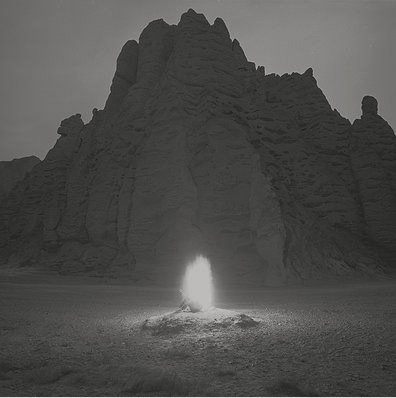
© Taca Sui from the series ‘Odes’
I don’t think I’m the right person to comment on photography in China and Hong Kong, but I can share a bit of my thought. Photography in China is of course very energetic and vibrant. In my humble opinion the strange combination of economic bloom and the instability of the society nurtures the many unique works by artists in China. Many of them are bold and fearless. As one of my favourite quotes from Nietzsche puts it, “You must carry a chaos inside you to give birth to a dancing star”.
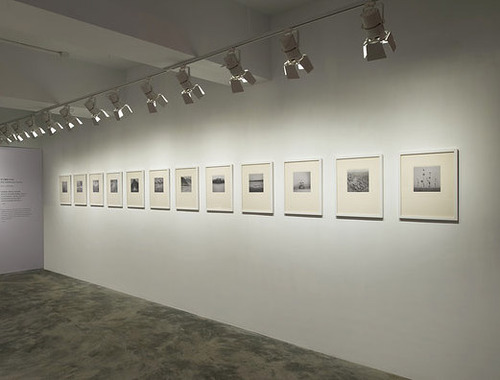
© The Salt Yard, installation view ‘Odes’ by Taca Sui, 2013
Works by Hong Kong photographers, especially for my generation or before that, prefer working in a more subtle way in a certain extent, as we are brought up during the time of colonial Hong Kong while the society is stable and there was steady growth of economy. They tend to use implications or metaphors to express their views rather than speak out their thought explicitly through their works. However younger generation are more willing to articulate their thoughts by using directorial mode of photography like staged photography. It’s a rather rough summary, as the situation here in Hong Kong is ever-changing.
In the choice of the exhibitions presented we find a strong emphasis on the social aspects of photography: the discriminated role of women in Russia, the controversial issue of hunting in the African countries, the consequences of nuclear in Japan, the rapid changes in Chinese culture that emerge from the archive of negative films by Thomas Sauvin. Tell us about….
DS: Hong Kong is a politically charged city, people always view things in their own ideological ways, and me too! I guess this is due to my own background as well. Though I was trained as a designer, I worked as a photojournalist for over a decade. I’ve been influenced by works of documentary photographers with social concerns. I have also invested much of my time researching the social and ideological issues in photography, which are not necessary in the genre of documentary photography or even straight photography. Some photography works look up these issues subtly, for example the casual and lighthearted portraitures in When Coast Lilies are in Blossom by Kazutomo Tashiro. They perfectly showcase how people cope with the aftermath of the disaster in Fukushima. This kind of works always catches my attention as I always believe photography is not just for aesthetics’ sake. Having said that, I am open to any kind of photography.
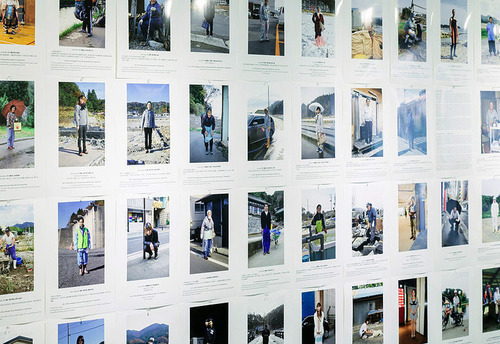
© The Salt Yard, installation view ‘When Coast Lilies are in Blossom – momentary dialogues in Sanriku and Fukushima, 2011-2013’ by Kazutomo Tashiro, 2014
The Salt Yard host a nice bookshop with a special selection of books and magazine. What are the criteria that you have followed in the choice of books?
DS: We especially look for books that are published by lesser-known publishers, books self-published by photographers that not distributed by mainstream distributors. Being an independent publisher myself I know how tough it is in finding outlets for my own publications. I perceive the bookstore as a way to nurture the culture of photobook in Hong Kong, rather than treating it as a business. It helps us to sustain The Salt Yard in a very very minor way though!
Tell about your personal research, you are working on a new monograph about the series ‘Blocks’?
DS: ’Blocks’ is a documentary series about Hong Kong’s public housing estates, or a collection of portraits of these housing estates. I’ve been a public housing estate tenant for nearly three decades, witnessing the changes Hong Kong public housings throughout the years. Many of the old estates are recently renovated with kindergarden styled color palette, but it fails to hide the realities faced by people living in: low income, unemployment, disability, family problems, new immigrants, ageing population, etc. The appearance and what is inside is simply a glaring contrast.
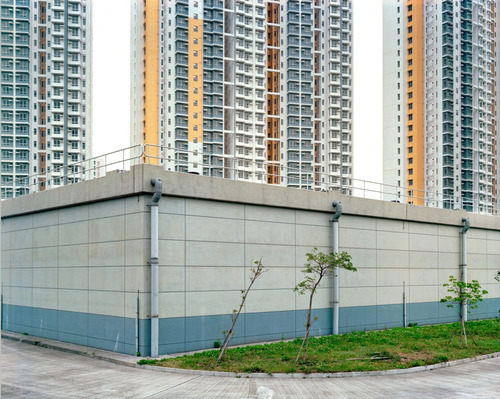
© Dustin Shum from the series ‘Blocks’
Also, there are photographs of shops and restaurants folded due to sky-high rent of “The Link REIT” (a real estate investment trust). Although in the past,shopping malls in housing estates were poorly managed by the government, they were serving the needs of the residents. The Link REIThowever, as a listed company, naturally works for the profit of its shareholders. It has introduced large chain stores into these shopping malls, increased the rent to market price, that many small shops, wet market venders and eateries have been kicked up. These small businesses used to provide services and products at lower-than-market prices, so that people living in public housing who earn relatively less could still enjoy reasonable quality of life. But now they have to shoulder the burden of expensive commodities. My photographs cannot possibly capture everything I want to express, but they are the projections of my psychological landscape as a resident.
Conflicts between Hong Kong people and Mainland Chinese are increasing nowadays, as the recent protest of the 1st of July has shown us. How do you feel being a Hong Kong based photographer living in the fast developing China yet still with memories of the ‘old days’. How this has affected your research and photography?
DS: I graduated from college in the late 90s, about the time when Hong Kong’s sovereignty was to return to China in 1997. During that period there was a very popular topic among artists in their works: the so-called “identity crisis”. People were miserable about their own identity that they were about to be changed from being a citizen in a British colony to one in China. Exploring China with photography was becoming a way to tackle this issue.
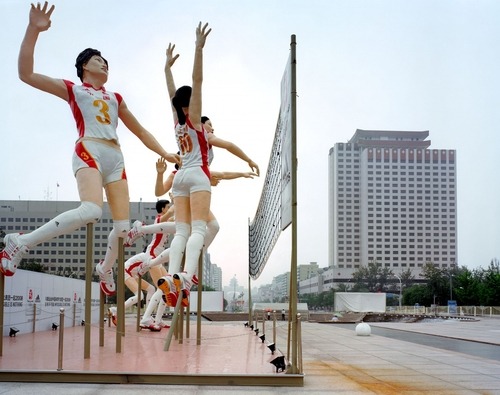
© Dustin Shum from the series ‘Photogenic Olympians (volleyball one)’
My previous series 'Themeless Parks', 'A Shopping Mall Odessey' and 'Photogenic Olympians' basically follow this path. I want to criticise the contemporary Chinese through these works and question the relationship between Hong Kong and China as well. Nowadays, attitude of the general publics towards China tend to be more radical, works relating to China is no longer popular. For me, I always want to make my point after a profound apprehending of the background, just like Abraham Lincoln said, “I don’t like that man, I must get to know him better”.

© Dustin Shum, installation view ‘Themeless Parks, AAFF 2011, Italy
Projects for the future both as curator and photographer? The project ‘Blocks’ has been selected for the new edition of the exhibition “Naturae” which is centered on the experience of landscape through nature. Tell us about how the photographic medium is involved in the perception of space, or rather in its awareness. Also tell us about the relation with nature inside a dense city as Hong Kong?
DS: I’m very glad to be involved in this exhibition. I always treat photography as a way to make a dialogue with the space around us, especially urban and man-made environment. I view this dialogue in a political way too. These spaces and environments are the ways authority manifesting their powers. Everything exists with a reason.
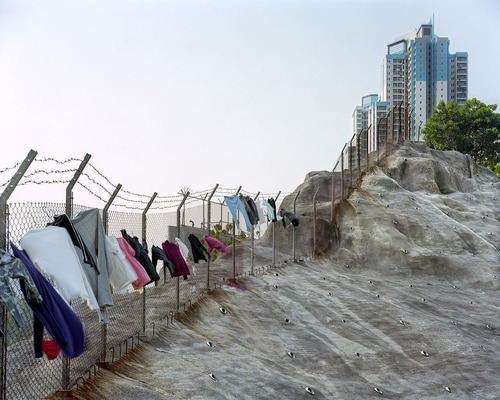
© Dustin Shum from the series ‘Blocks’
Regarding my future I’m still striving to divide my time between my own photographic work and the work for curating exhibition for The Salt Yard. I won’t give up pursuing my own projects. I’m always a photographer first, a curator comes second.
---
LINKS
Dustin Shum
share this page